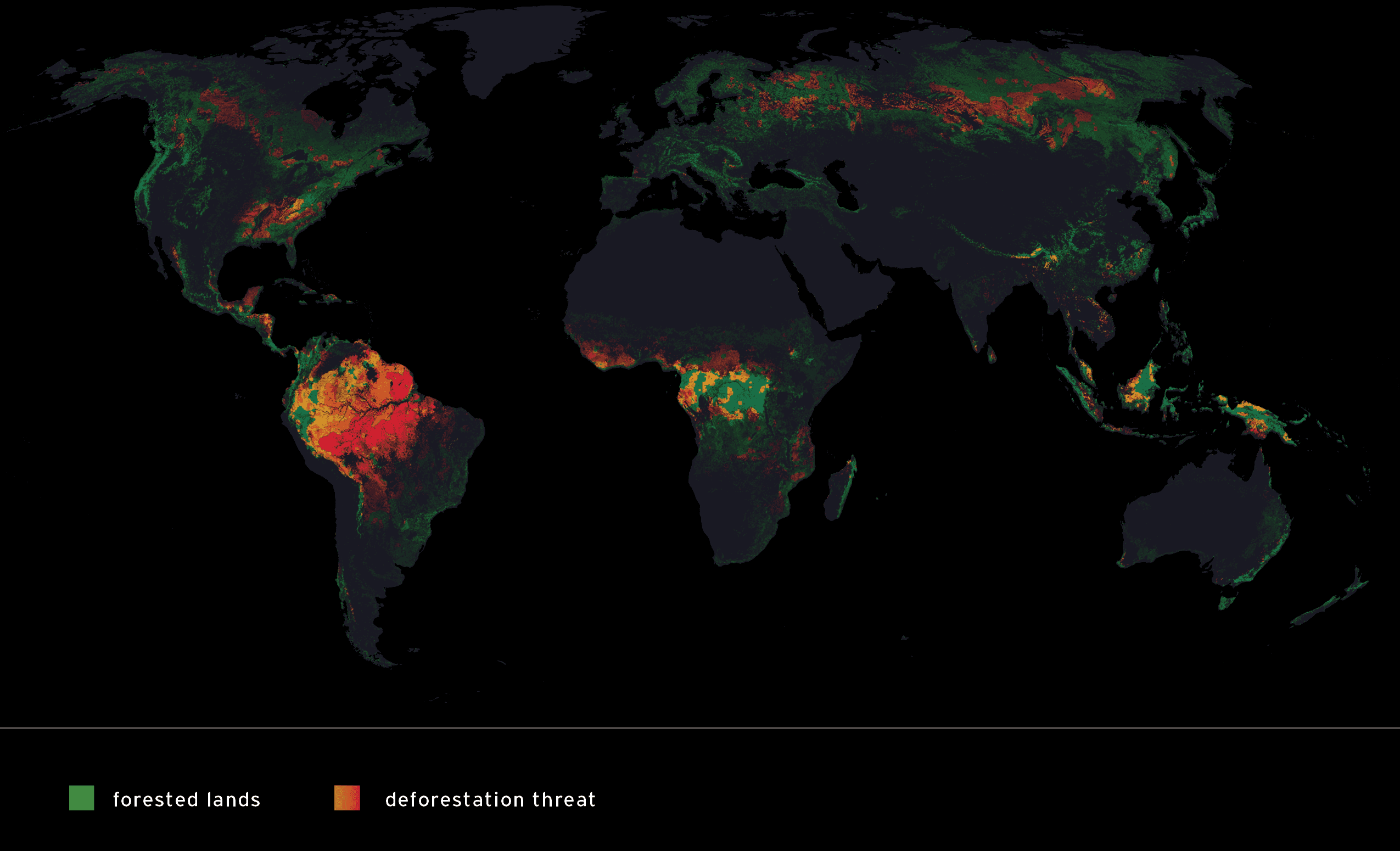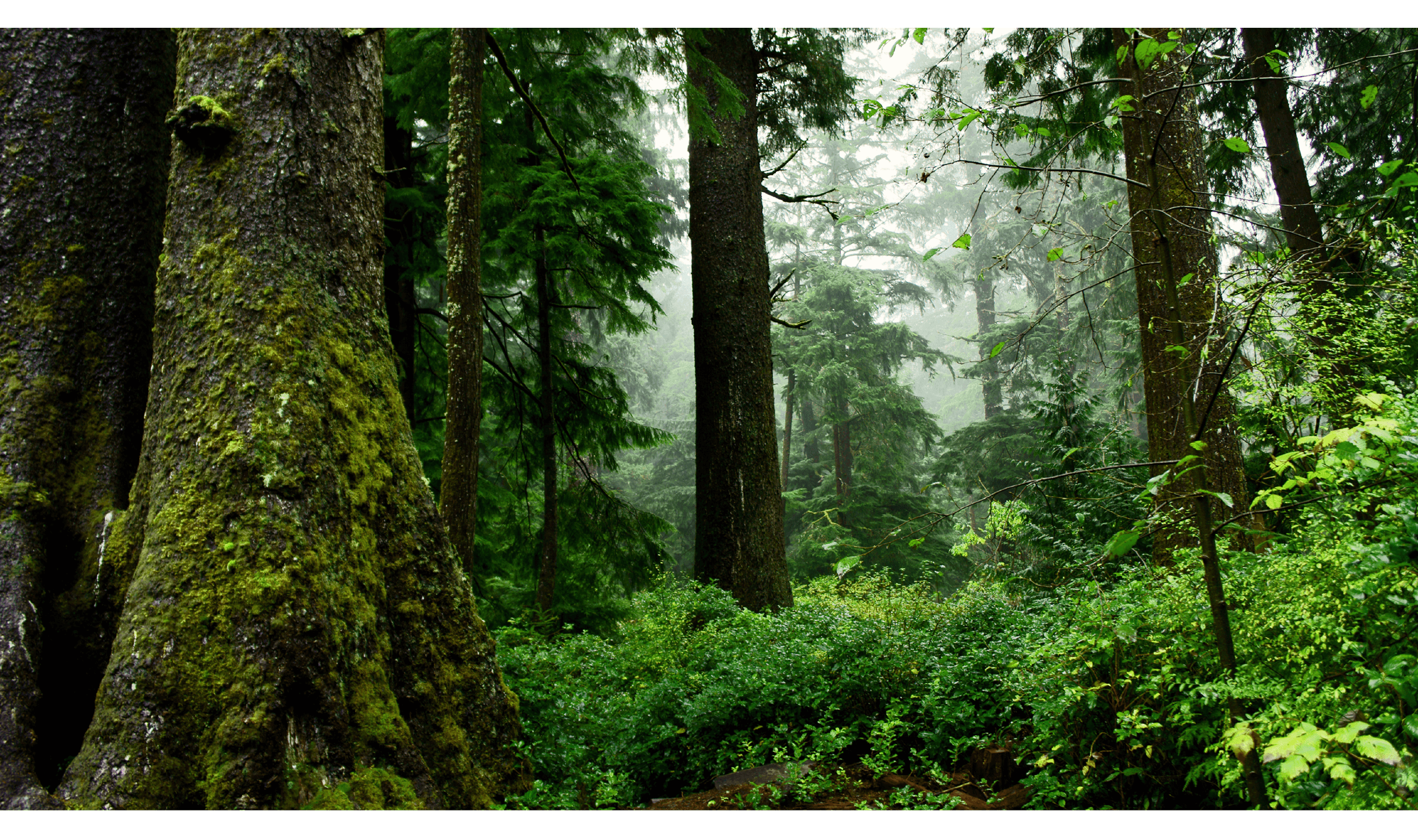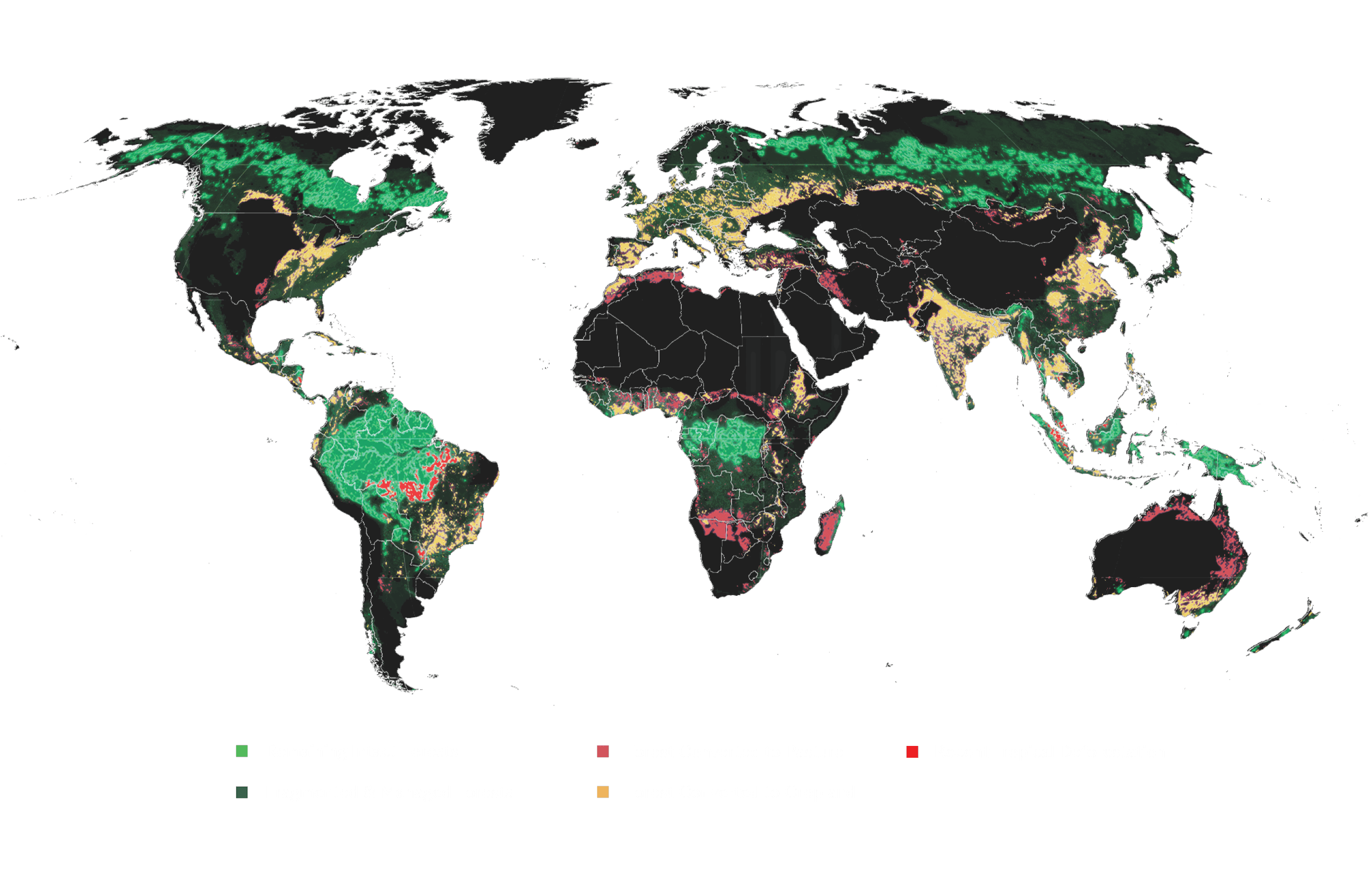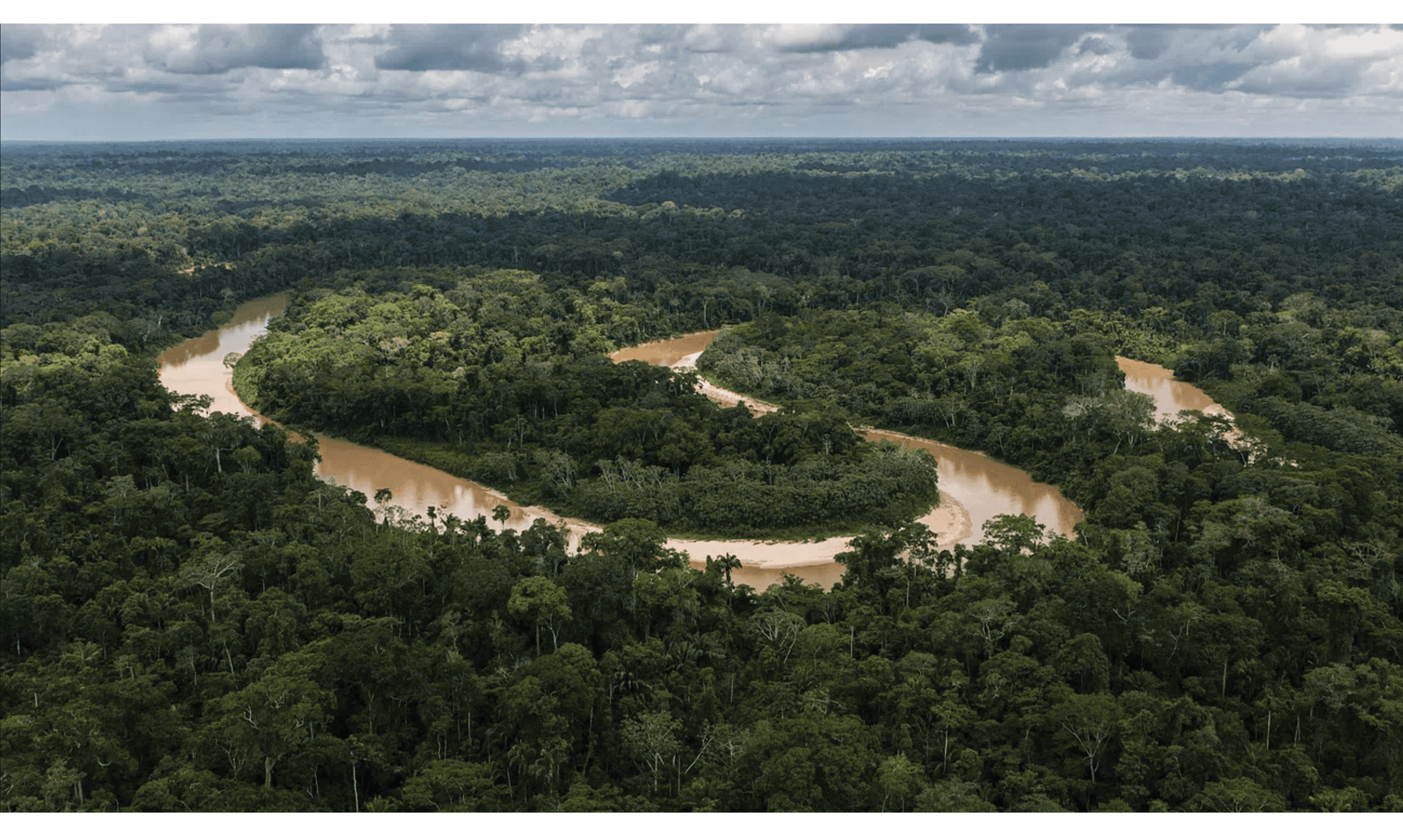Protect threatened forests

MANY OF THE WORLD'S OLDEST FORESTS ARE THREATENED WITH DEFORESTATION. ILLEGAL LOGGING AND EXPANDING AGRICULTURE AND RANCHING ARE THE PRIMARY DRIVERS.
By supporting sustainable forestry practices and reducing global demand for meat, we can reduce deforestation pressure and increase protections for earth's remaining forests, keeping carbon in the ground and preventing up to 10% of annual greenhouse gas emissions that come directly from deforestation.
map sources: current forest cover: forest height, NASA. | deforestation threat: Jean-Francois Bastin et al. , The global tree restoration potential. Science (2019). Fig. 3. Risk Assessment of future changes in potential tree cover by 2050. | emissions reductions and offsets potential based on estimates from Project Drawdown, World Resources Institute, The Nature Conservancy and Griscom et al. Natural Climate Solutions. PNAS (2017)

80% OF INTACT OLD-GROWTH FORESTS HAVE DISAPPEARED.
"Since the turn of the millennium, the world has been losing around 5 million hectares of forest every year... Three-quarters is driven by agriculture. Beef production is responsible for 41%... palm oil and soybeans account for another 18%; and logging for paper and wood across the tropics, another 13%."
Source: “The Last Frontier Forests” World Resource Institute 1997; “The Last Frontiers of Wilderness...” Potapov et al. 2017. Cutting down forests: what are the drivers of deforestation? Our World In Data. Hannah Ritchie. 2021 | Image: Old Growth Forest, Oswald West State Park, Oregon. David Patte/U.S. Fish and Wildlife Service
Historic Forest Conversion

ONLY 17% OF FORESTS ARE CURRENTLY PROTECTED.
Source: “The Last Frontier Forests” World Resource Institute 1997; “The Last Frontiers of Wilderness...” Potapov et al. 2017

WHAT IF WE COULD SET ASIDE 40% OF ALL LAND ON EARTH FOR THRIVING, CARBON-RICH AND BIODIVERSE FORESTS?
By expanding forest protections, restoring degraded forest, and reducing our agricultural and grazing footprints, we could set aside 23% of our land for pristine forest, 10% for forest restoration, and 7% for sustainably managed forestry.
Source: Project Drawdown, “Natural Cliamte Solutions” Griscom et al. “Atlas of Forest Restoration Oppotunities” World Resources Institute. Image Source: Neil Palmer/CIAT, CC BY-SA 2.0, via Wikimedia Commons
Next solution



Learn about Maya Lin’s fifth and final memorial: a multi-platform science based artwork that presents an ecological history of our world - past, present, and future.

Discover ecological histories and stories of former abundance, loss, and recovery on the map of memory.

Learn how we can reduce our emissions and protect and restore species and habitats – around the world.

See how art can help us rethink the problems we face, and give us hope that each one of us can make a difference.

Help make a global memorial something personal and close to home. Share your stories of the natural world.